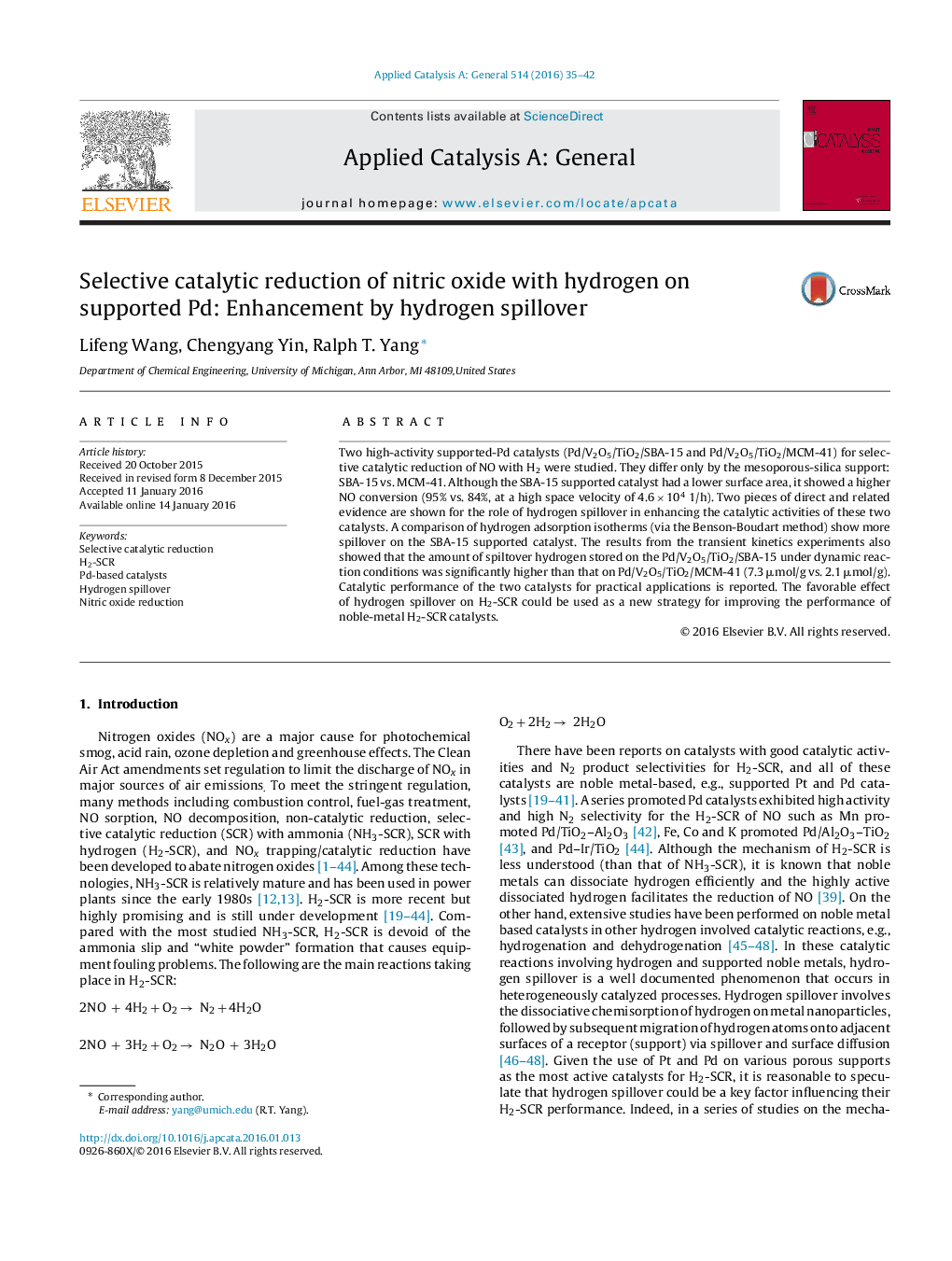| Article ID | Journal | Published Year | Pages | File Type |
|---|---|---|---|---|
| 38939 | Applied Catalysis A: General | 2016 | 8 Pages |
•H2-SCR is a new but highly promising technology, but is poorly understood.•Two pieces of direct evidence for hydrogen spillover are shown for H2-SCR on supported Pd.•H2 spillover was found to significantly enhance the H2-SCR reaction.•Two most active H2-SCR catalysts are reported.
Two high-activity supported-Pd catalysts (Pd/V2O5/TiO2/SBA-15 and Pd/V2O5/TiO2/MCM-41) for selective catalytic reduction of NO with H2 were studied. They differ only by the mesoporous-silica support: SBA-15 vs. MCM-41. Although the SBA-15 supported catalyst had a lower surface area, it showed a higher NO conversion (95% vs. 84%, at a high space velocity of 4.6 × 104 1/h). Two pieces of direct and related evidence are shown for the role of hydrogen spillover in enhancing the catalytic activities of these two catalysts. A comparison of hydrogen adsorption isotherms (via the Benson-Boudart method) show more spillover on the SBA-15 supported catalyst. The results from the transient kinetics experiments also showed that the amount of spiltover hydrogen stored on the Pd/V2O5/TiO2/SBA-15 under dynamic reaction conditions was significantly higher than that on Pd/V2O5/TiO2/MCM-41 (7.3 μmol/g vs. 2.1 μmol/g). Catalytic performance of the two catalysts for practical applications is reported. The favorable effect of hydrogen spillover on H2-SCR could be used as a new strategy for improving the performance of noble-metal H2-SCR catalysts.
Graphical abstractFigure optionsDownload full-size imageDownload high-quality image (169 K)Download as PowerPoint slide
